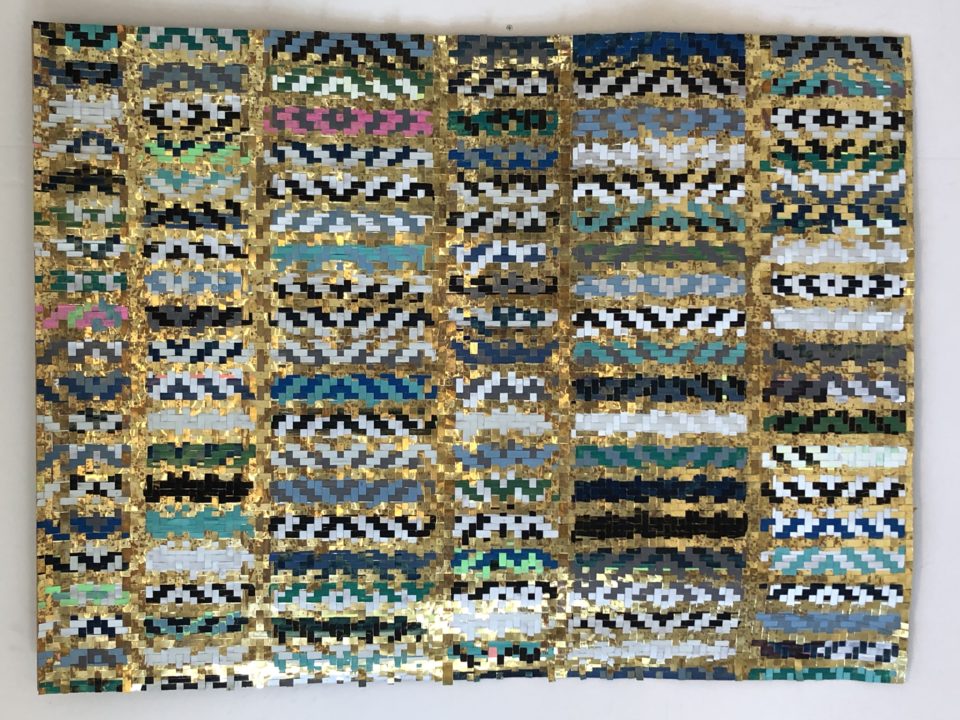Irene Agbaje
—“My studio is my art factory where I work from seven to seven. My art is based on traditional techniques that have been in practical use for thousands of years – but in unorthodox material choices and combinations.”
Irene Agbaje makes embroideries in large formats. She embroiders on silk veils, copper fabric, banana fiber, brass mesh, organza among other things. In addition to embroidery, she weaves using the double-ikat technique in different bindings on brass foil and tapestry on copper warp. She chooses to work with durable materials, favouring large and bold expressions over delicate or shy gestures, often with a placement in public spaces in mind. The finished works are never figurative but always visually striking and colourful, the shimmering metal threads adding another dimension.
Agbaje has a long artistic career and is represented in the collections of the National Museum of Sweden and the Röhsska Museum of Design and Craft among others. She was also commissioned to create public art for the devotional room at the New Karolinska Hospital in Solna, Stockholm.
OCCUPATION
Textile artist
WHAT DOES FIBER MEAN TO YOU?
It is what connects everything. A tiny fragile wire can be part of what holds up an entire bridge.
WHAT IS YOUR FAVOURITE TEXTILE FIBER OR TECHNIQUE?
It fluctuates, right now lots of thin copper thread, lots of thin embroidery thread, ikat-coloured linen, brass foil. Combined with fairly simple techniques like plain weave, ikat, or goose-eye twill. I’m eager to take up weft-reinforced double-ikat again, now during my golden years.
WHAT IS YOUR MOST VIVID TEXTILE MEMORY?
I was 9-10 years old, and we were going on another tent vacation to the relatives in Finland. The tent from the year before had rotted, and it was not possible to buy a new tent. My quirky mom decided to sew one instead. I help her lay the new tent fabric on the living room floor and the mouldy parts on top, lining them up exactly so that the old tent pegs and zipper would fit. That was probably when I realised that the impossible was feasible.




